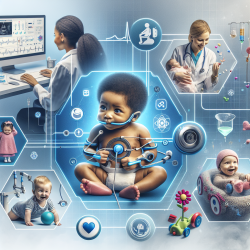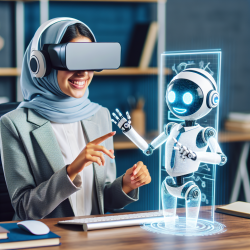Introduction
As a speech-language pathologist dedicated to improving children's outcomes, it's essential to stay informed about interdisciplinary research that can enhance our practice. The study titled Contextualizing Neuro-Collaborations: Reflections on a Transdisciplinary fMRI Lie Detection Experiment offers valuable insights into how transdisciplinary collaborations can be leveraged to advance our field.
The Essence of Neuro-Collaboration
The research highlights the concept of "neuro-collaboration," which refers to collaborative efforts that integrate the neurosciences, humanities, and social sciences. This approach is particularly relevant in speech-language pathology, where understanding the neurological underpinnings of communication disorders can lead to more effective interventions.
Implementing Transdisciplinary Insights
Practitioners can enhance their skills by incorporating findings from transdisciplinary research into their practice. Here are some practical steps:
- Stay Informed: Regularly review interdisciplinary research to understand how neurological insights can inform speech-language interventions.
- Collaborate Across Disciplines: Engage with professionals from other fields, such as neuroscience and psychology, to gain a holistic understanding of communication disorders.
- Apply Critical Neuroscience: Use critical neuroscience principles to question and refine existing therapeutic approaches, ensuring they are grounded in the latest scientific evidence.
Encouraging Further Research
The study also emphasizes the importance of ongoing research in neuro-collaboration. As practitioners, we can contribute to this body of knowledge by participating in research studies, sharing our clinical experiences, and advocating for interdisciplinary research initiatives.
Conclusion
By embracing the principles of neuro-collaboration, speech-language pathologists can enhance their practice and improve outcomes for children. This transdisciplinary approach not only enriches our understanding of communication disorders but also fosters innovative therapeutic strategies.
To read the original research paper, please follow this link: Contextualizing neuro-collaborations: reflections on a transdisciplinary fMRI lie detection experiment.










